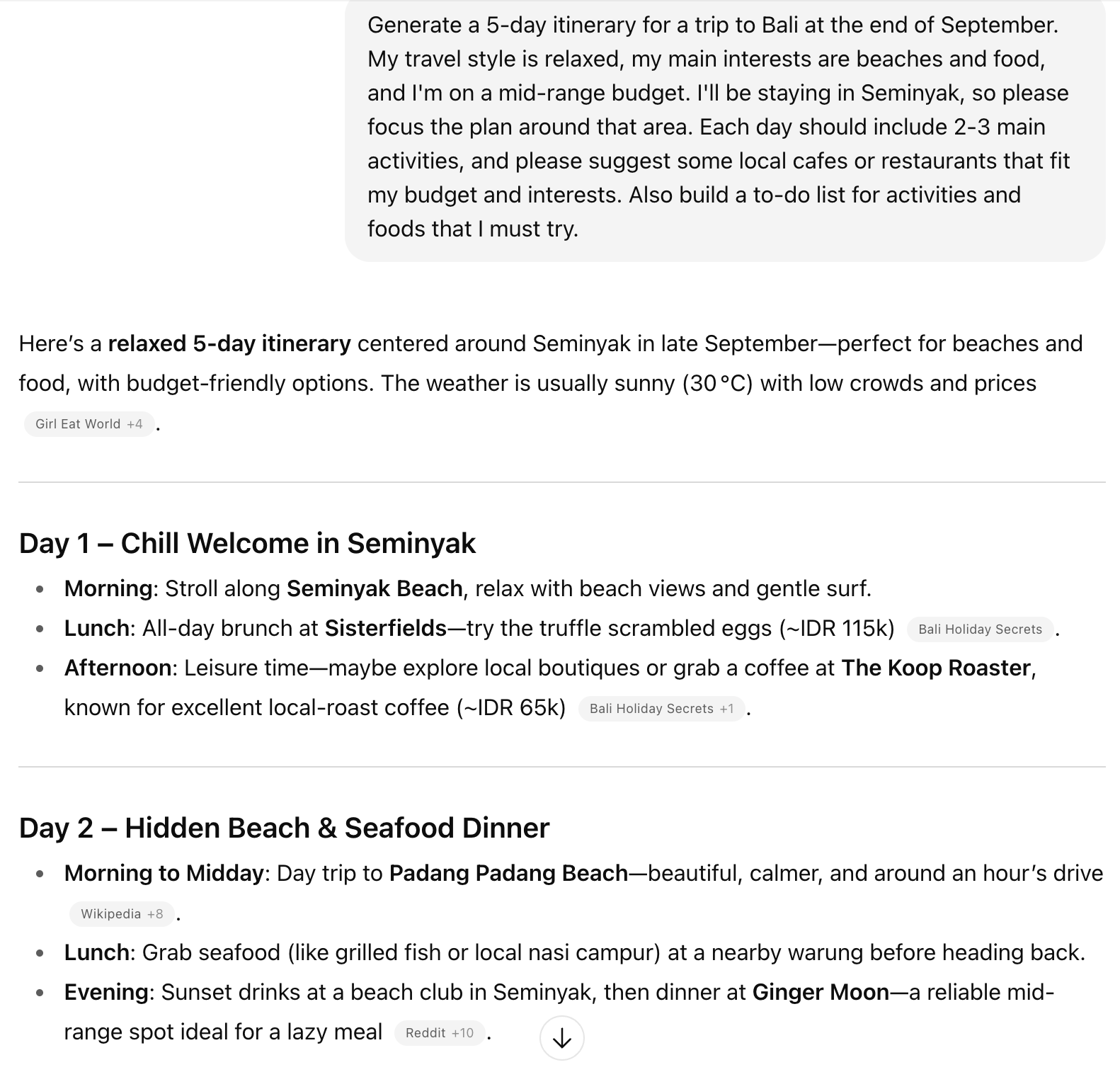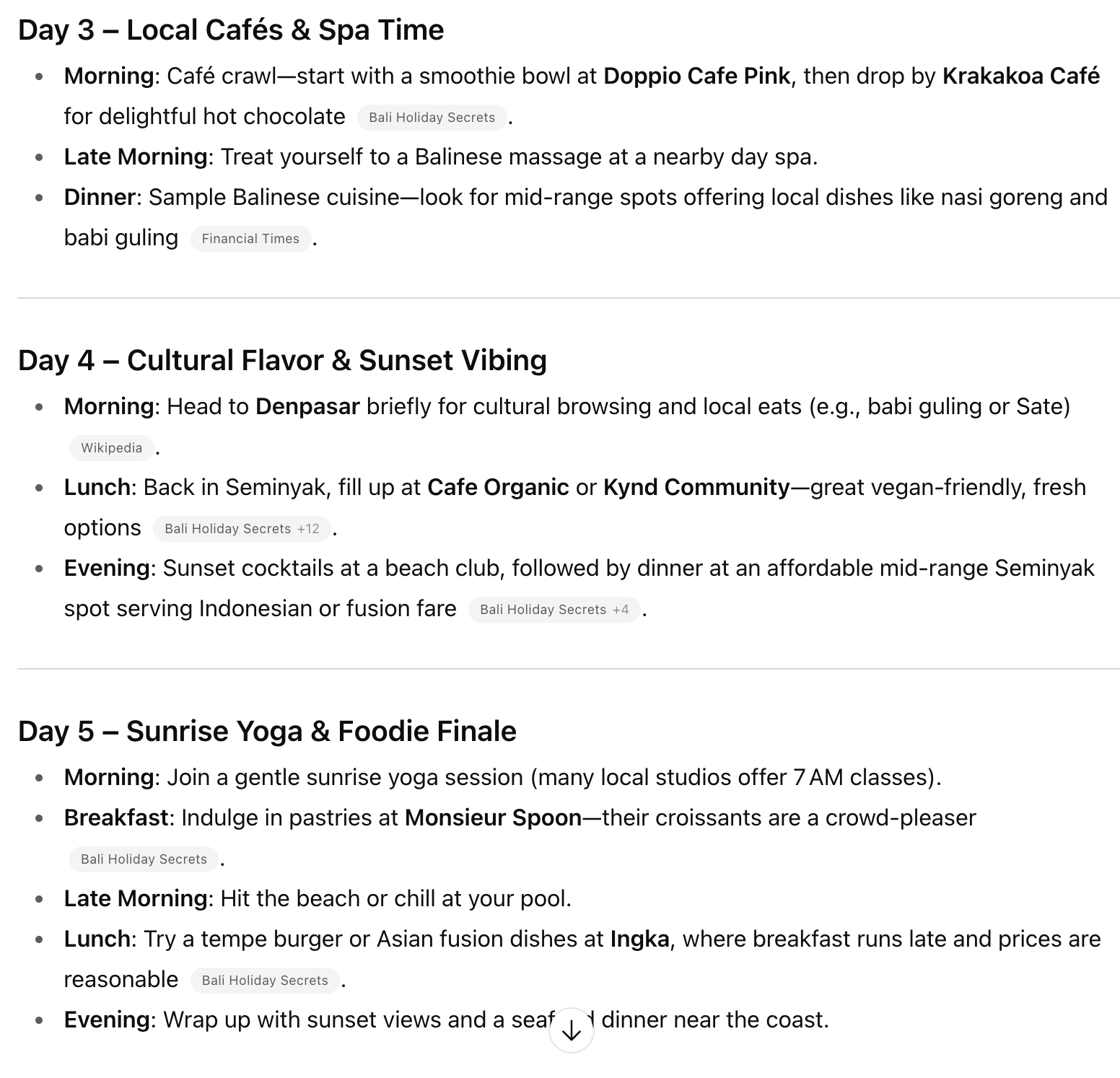Course
Ever since GPT-5 was released, I’ve been curious to see how it handles more than just text generation and writing code. While the announcement didn’t quite live up to the hype for me, I decided to put GPT-5 to the test myself. I tried seven experiments in the chat interface to explore GPT-5’s capabilities. In this tutorial, we’ll look at how it:
- Suggests realistic business ideas
- Creates functional websites and apps
- Builds interactive browser-based games
- Transforms reports into presentations
- Gamifies the learning process, and more!
Some of these examples worked on the first try, while others needed a bit of iteration and debugging. The goal here isn’t just to showcase GPT-5’s output, but also to highlight where it shines, where it stumbles, and how you can get better results.
I’ll only focus on practical examples in this blog, but if you’re looking for general information on benchmarks, new features, and reviews, make sure to check this GPT-5 overview, our guide to the GPT-5 API, our guide to ChatGPT Apps, and our article on what's new in GPT-5.1.
Example 1: Build Me a Personal Running Tracker
For this experiment, I wanted something practical like a personal running tracker. As someone who only started running a month ago, I still rely on a mix of data tracking for motivation and structured warm-up and cool-down routines to avoid injury.
Prompt: I started running about a month ago, create a website to keep a track of my activity daily, motivate me, and help me build a pre and post-run warm-up and cool down routine.
Here is what GPT-5 shared with me:
GPT-5 generated a clean, functional website template with:
- Daily activity logging to track progress over time
- Motivational prompts to help stick to the habit
- Functional warm-up and cool-down routines are directly embedded into the interface.
I tested the same prompt with Gemini 2.5 Flash. While Gemini produced a visually polished app with a great color scheme, it ignored my request for an interactive pre- and post-run routine. However, GPT-5 stood out for sticking closely to the brief. It implemented the core workout functionality, including interactive pre- and post-run routines along with the ability to track my daily workouts.
Example 2: Give me a Business Idea Suitable for My Area
I live in Delhi and have been thinking about starting a small business in my free time, so I asked GPT-5 this:
Prompt: I live in Delhi and have about 7-8 hours free on weekends. Suggest a business idea with a 30k investment.

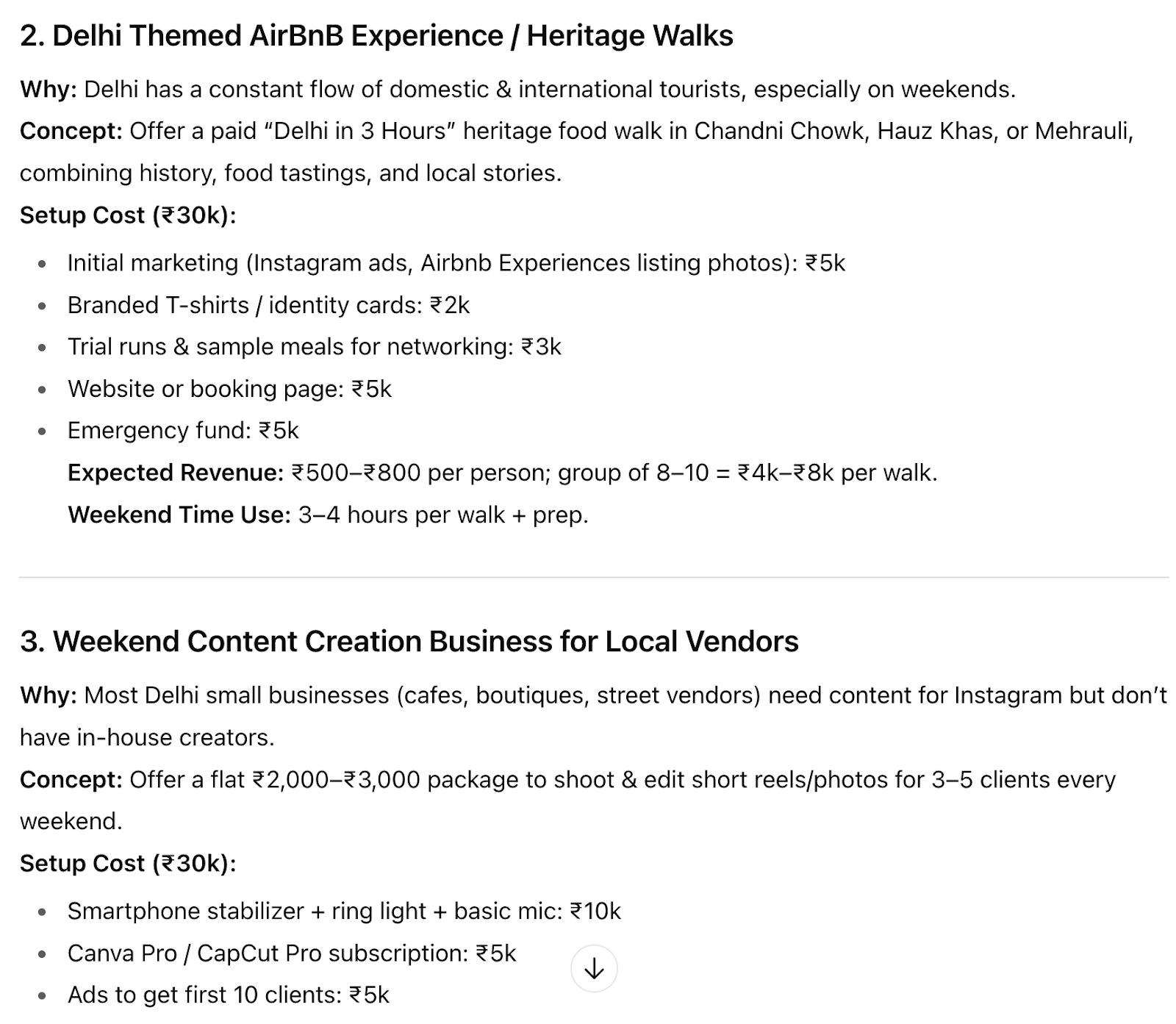
For this prompt, GPT-5 returned a detailed and well-structured response tailored to my prompt, abiding by the constraints like location, available time, and budget.
While the first business idea makes sense, the other two felt a bit more niche and would likely require stronger marketing and networking to gain traction. However, what stood out the most was how GPT-5 formatted the output like a mini business plan for each idea, breaking down cost by parts along with expected revenue and time required.
Example 3: Recreate a Childhood Game
For this experiment, I decided to test GPT-5’s ability to create a browser-based game from scratch using HTML5 Canvas. I picked a childhood favorite, Marbles Game (also known as Taws), and the prompt included multiple aspects, from the physics of collisions to a responsive design and a trajectory visual for the striker marble.
Prompt: Create an HTML5 canvas-based 'Marbles Game,' sometimes known as 'Taws.' The game should feature a designated playing area on the canvas (e.g., a circle or square). Populate this area with several small, round, visually distinct 'glass marbles.' Implement a mechanic where the user can 'flick' or 'shoot' their own marble by clicking or dragging to set power and direction. The objective is to use this marble to hit other marbles, knocking them out of the playing area. Include realistic (yet simplified) physics for marble collisions, friction, and movement. Provide a clear visual indicator for the aiming trajectory and power. Add a 'Reset Game' button to clear the board and reposition the marbles. The game should prioritize a clean, classic aesthetic and be fully responsive to work well on both desktop and mobile devices
GPT-5 responded with a complete JavaScript-based game, handling collision physics, aiming mechanics, friction effects, and a reset function. While the chat interface didn’t render the HTML directly, I copied the code into an online compiler to test it.
The game had a minimalistic design, and flicking the marble felt intuitive with a drag-and-aim mechanism, and the power indicator helped with a clear trajectory line. The final result was a fully playable, physics-based marbles game that worked smoothly.
Example 4: Generating Presentation from Reports
For this test, I wanted to see if GPT-5 could handle a real-world workplace scenario like turning lengthy financial reports into ready-to-present slides.
Prompt: My friend works in finance and has to go through multiple reports to create a presentation before every meeting. Create a web application where the user inputs a report and generates a presentation with charts and graphs. You may use images from the web to make it look more presentable
GPT-5 produced a functional web app that included an option to upload a report or type in details for a slide. It automatically extracts key points and visualizes them with charts and graphs. While the demo had only enough data to generate one slide, it was a solid prototype. When I uploaded a PDF, it triggered a bug, but GPT-5 solved it quickly.
Example 5: Gamify Python Learning
Every coder has, at some point, wished that learning to code were a little easier. In this experiment, I tried to gamify the process of learning and practising Python.
Prompt: My friend is learning to code in Python. Create a web-based adventure game "Code Explorer," where he can learn and practice coding at the same time.
GPT-5 built a fully functional browser-based game where players progress through coding challenges to advance the storyline. The game came with thoughtful mechanics like:
- Dynamic feedback system: The incorrect code triggered red hints, which turned green once the correct function or output was detected.
- Progress tracking: A live progress bar that updated as challenges were completed.
- Hint toggle: The players could choose to reveal or hide guidance, keeping a balance between learning and problem-solving.
The interface was minimalist (mostly black and white) for most simulations I tried, but the core functionality was spot on. It effectively gamified the coding process, making it both engaging and instructional.
Example 6: Itinerary Generator
To test GPT-5's ability to handle complex, personalized planning, I challenged it to act as a travel agent. Using a detailed prompt that outlined my travel style, interests, budget, and location, I asked for a 5-day itinerary.
Prompt: Generate a 5-day itinerary for a trip to Bali at the end of September. My travel style is relaxed, my main interests are beaches and food, and I'm on a mid-range budget. I'll be staying in Seminyak, so please focus the plan around that area. Each day should include 2-3 main activities, and please suggest some local cafes or restaurants that fit my budget and interests. Also, build a to-do list for activities and foods that I must try.
The result was a very specific and practical travel guide. GPT-5 provided generic suggestions and generated a detailed day-by-day itinerary with specific cafes, beaches, and cultural spots, even citing sources like travel blogs and Reddit to back up its recommendations.
It also generated a "To-Do & Must-Try List," which summarized the key activities and local foods, transforming the itinerary into an easy-to-read, actionable plan.
Example 7: Manage Routine With Google Calendar
For my final experiment, I tested GPT-5's Connector functionality by attempting to automate my daily routine. The task was simple and used a natural language prompt to schedule a recurring workout in my Google Calendar.
This option is available in Plus and Pro accounts. Here is how to get started:
- Open Settings and click on Connectors in ChatGPT.

- Select Google Calendar and click Connect.
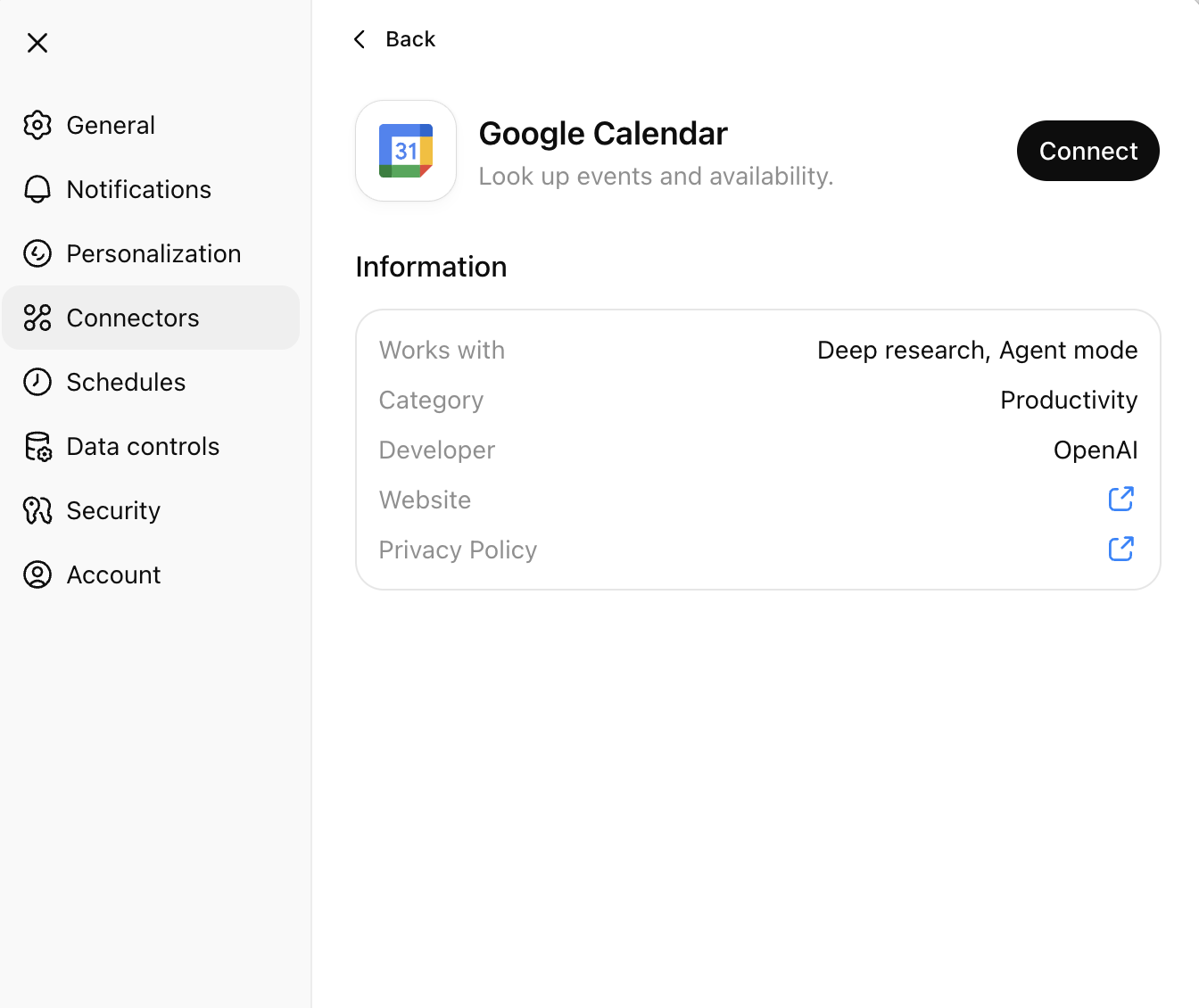
- Authorize ChatGPT to access your calendar by logging in with your Google account.
- Once connected, open a new chat and click on
+and select Agent Mode. Then select Web search and Google Calendar under sources.
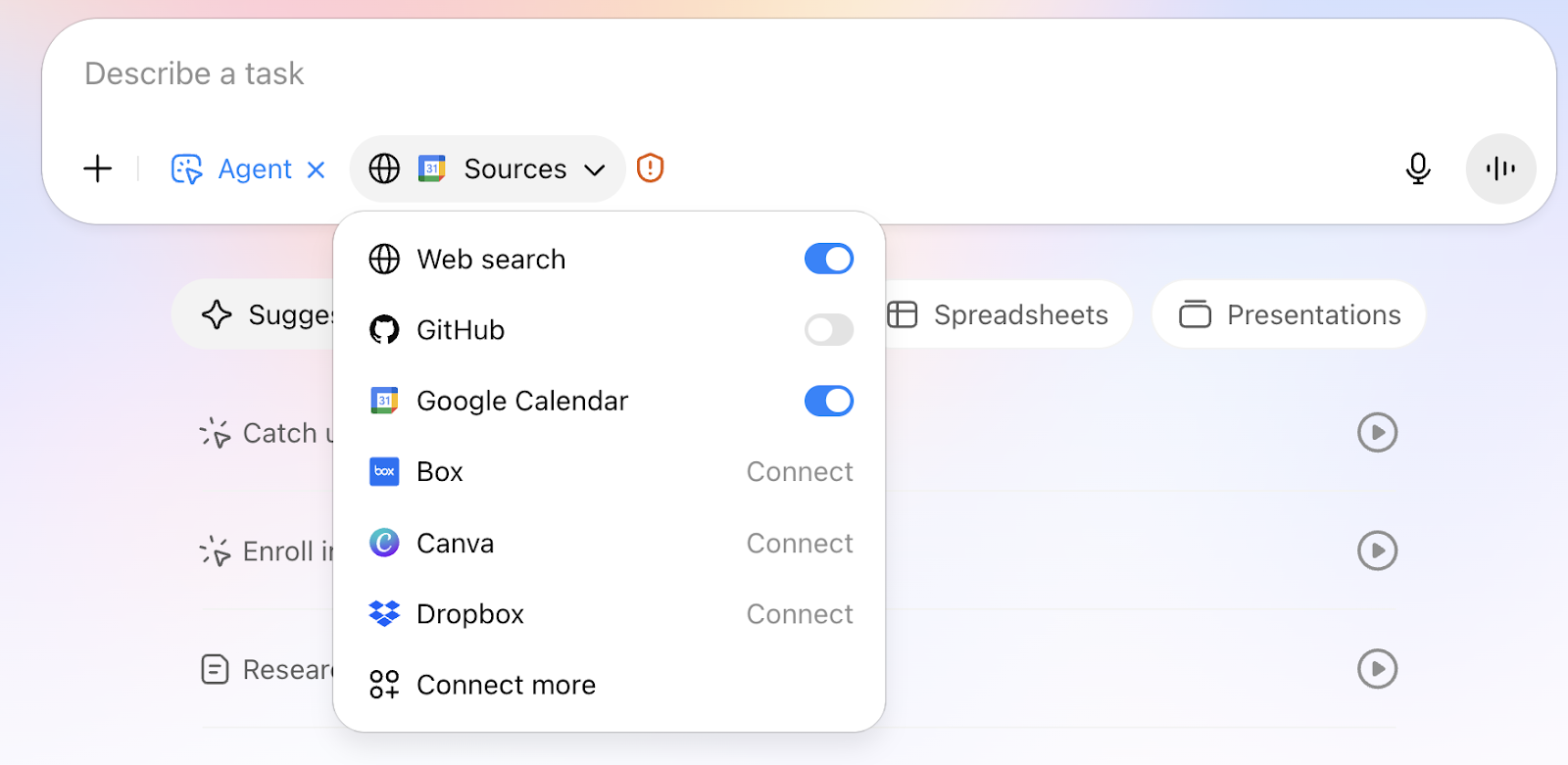
Now, ChatGPT can create events on your behalf in your calendar. Here is a prompt I used:
Prompt: Add a 30-minute workout to my Google calendar every morning at 6 AM, starting tomorrow
The model quickly understood the request and initiated an API call. However, the API connection failed multiple times, and the process was interrupted by a redundant login request. The event never made it to my calendar. It would’ve been easier for me if I had simply used an assistant on my phone.
Note: The model's reasoning and tool-calling capabilities can be inconsistent during initial attempts. This process may require 3-4 trials as GPT-5 refines its approach to successfully interface with the calendar API.
Conclusion
Throughout these experiments, I explored how GPT-5 can build interactive games, create functional web apps and prototypes, and act as a personalized planning assistant.
Its true value lies in its ability to generate not just static content, but working code, structured plans, and interactive tools. Its advanced reasoning and self-debugging capabilities make it a promising partner for developers, project managers, and working professionals.
Introduction to AI Agents

I am a Google Developers Expert in ML(Gen AI), a Kaggle 3x Expert, and a Women Techmakers Ambassador with 3+ years of experience in tech. I co-founded a health-tech startup in 2020 and am pursuing a master's in computer science at Georgia Tech, specializing in machine learning.
